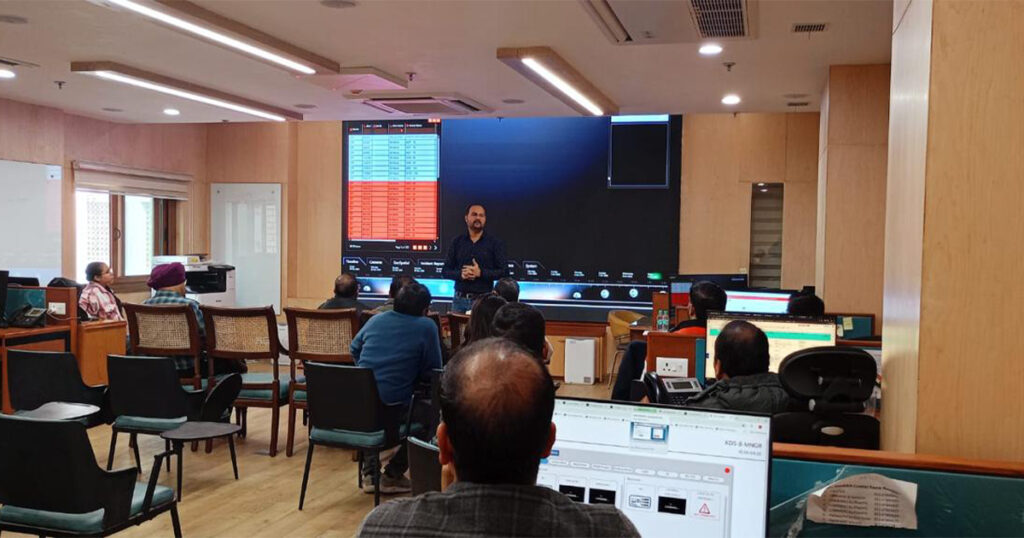Large religious events like the Mahakumbh in India, the Hajj in Saudi Arabia, or Pope-led gatherings in Vatican City attract millions of devotees from around the globe. Managing such colossal crowds requires more than traditional methods. Advanced crowd safety solutions driven by technology have revolutionized how organizers plan and execute safety protocols.
These solutions rely on cutting-edge tools such as AI-powered surveillance systems, IoT-enabled devices, and real-time communication networks. For instance, AI can monitor crowd density and movement, while IoT devices can detect environmental changes like temperature or air quality, enabling swift responses to potential hazards.
Event Safety Technology in Action: Lessons from Mahakumbh 2025
One of the best examples of technology for mass gatherings is the Mahakumbh 2025, the world’s largest religious festival. Held in Prayagraj, India, this event attracts over 50 million pilgrims daily during its peak days. Ensuring safety at such an immense scale requires advanced technology and meticulous planning.
The event utilized AI-powered smart security systems integrated with over 2,700 CCTV cameras, including 328 AI-enabled units. These systems monitored crowd density, identified potential bottlenecks, and flagged suspicious activities in real-time. For example, AI algorithms detected areas where crowd movement slowed significantly, helping authorities divert people to alternate routes to prevent overcrowding.
Key Technologies Driving Crowd Safety Solutions
1. AI-Powered Surveillance:
Advanced AI algorithms can analyze real-time video feeds, identifying unusual behaviour, unattended objects, or overcrowding. These insights allow security personnel to respond swiftly, preventing potential incidents.
2. IoT Sensors and Devices
IoT devices play a significant role in enhancing event safety technology. Sensors across the venue can monitor temperature, detect smoke, and even gauge crowd density. This data is transmitted to centralized systems for analysis, enabling real-time decision-making.
3. Drone Technology
Drones equipped with high-resolution cameras provide aerial views of crowded areas, making it easier to spot irregularities. In events like the Hajj, drones monitor large-scale crowd movement from above, offering a bird’s-eye perspective.
4. Biometric Access Control
Facial recognition systems and biometric scanners ensure only authorized personnel access restricted areas. This technology enhances security and reduces the risk of unauthorized entry.
5. Digital Communication Networks
Smart communication systems ensure seamless coordination between security teams, event organizers, and emergency responders. Walkie-talkies with GPS tracking, smartphone apps, and centralized command centres are often employed.
Benefits of Smart Security Systems for Religious Gatherings
Investing in smart security systems for large-scale religious events offers several advantages:
1. Proactive Threat Detection
AI and IoT systems enable event organizers to identify potential threats before they escalate, ensuring a proactive approach to safety.
2. Improved Crowd Management
By analyzing real-time data, organizers can prevent overcrowding, redirecting attendees to less congested areas. This reduces the risk of stampedes or other crowd-related incidents.
3. Faster Emergency Response
Integrated technologies streamline communication, ensuring faster response times during emergencies. Whether locating a missing child or addressing a medical situation, technology speeds up resolution.
4. Enhanced Attendee Experience
Safety measures backed by advanced technology give attendees peace of mind, allowing them to focus on the spiritual significance of the event.
Real-World Success Stories of Event Safety Technology
The Mahakumbh 2025 is not the only event to benefit from advanced safety solutions. The Hajj pilgrimage in Saudi Arabia, another massive religious gathering, has implemented similar technologies
AI-powered surveillance systems ensure that many worshippers move smoothly through designated areas.
In Vatican City, events led by the Pope rely on facial recognition technology and smart communication networks to ensure the safety of attendees. These technologies have drastically reduced security incidents, demonstrating the efficacy of technology for mass gatherings.
The Future of Technology in Event Safety
As technology evolves, so will its applications in ensuring safety at large gatherings. Innovations like predictive analytics, autonomous drones, and wearable health monitors are already being explored. These advancements promise to make events safer, more efficient, and more enjoyable for attendees.
For example, predictive analytics could use historical data to anticipate crowd behaviour, enabling organizers to make preemptive adjustments. Similarly, wearable health monitors could alert medical teams to emergencies, such as heart attacks or dehydration, ensuring faster intervention.
Conclusion: Embracing Technology for Safer Events
The role of event safety technology in managing large religious gatherings is undeniable. These tools have revolutionized how organizers approach safety and security, from AI-powered surveillance to IoT-enabled devices. Events like Mahakumbh 2025 and the Hajj pilgrimage showcase the transformative power of technology in mitigating risks and enhancing attendee experiences.
As we move forward, adopting advanced crowd safety solutions will be essential for managing the increasing scale of religious events. Investing in smart security systems can ensure these gatherings remain safe, allowing participants to focus on their spiritual journeys without worry.



